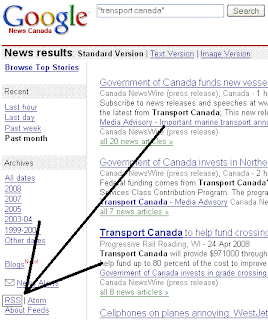March 25, 2008:
My vision of a Government of Canada Web Development Framework to support Web 2.0 collaborative tools is that every branch and directorate can develop their own projects that are customized and specific to their project, as they currently need to, but if they do so using Open-Source software that is hosted on a server, they can be made to communicate with each other.
A very common combination of server offerings, all free and open-source, is the LAMP combo: Linux+Apache+MySQL+PHP. The LAMP platform is a standard now among web applications, and with Open-Source software, can be made heavily customized and be made to communicate with each other providing the user with a consistent interface with a single log-in. This builds on the benefit of Web 2.0 which is about the links - communicating between sites and adding value to the user.
In many government departments the user-side platform already exists: and that is the web browser, which exists as a platform consistently on all computers, be them Windows, Mac, Linux, whether at home or at work.
What is necessary are the hosted web applications that communicate with each other, working behind the scenes.
Many departments already have a gateway that exists that all users already access regularly and log in to: it is the Intranet website, but it is very unclear what development there is there. I add here that it would be excellent if the Intranet site suddenly provided tools on the site for users to start using and collaborating.
There is a difference in the use of such web 2.0 applications, which are either "Internal" or "External" and that this distinction would help with focusing resources and efforts and facilitate development of some tools. Some tools are actually Internal to the organization, facilitating group collaboration among users at CSPS and other stakeholders. Such tool development may not be subjected to the rigorous standards involved with External tools, that communicate to the public. The means for developing an Internal tool like a group collaboration environment or a wiki should be focused on enabling the technologies and fostering user involvement. The means for developing an External tool like a Blog or forum should be focused on Security and Communications and so forth, as usual. The standards for external tool development should not detriment the development of internal tool development as it has, or we continue to indefinitely wait for things to be perfect and dispense with them before they are.
The notion of a "Private" and "Public" site are antiquated, and need to be specific to the user engagement, as now there aren't such sites, but instead levels to users. The distinction remains that if the site is on an external server, it is external. This reveals the continued debate, hindering this perspective until tools are perfect.
March 26, 2008:
It's amazing software that is becoming the trend on industry-standard servers. A "Sandbox" would be the right aim for this implementation, as IT services can learn from it to be service-oriented and working on the IT security, functionality and efficiency on the back end while providing many tools for branches and directorates to work with. Sometimes the need for a certain web-based app can be eliminated by where it fails at certain crucial business operations. Single-solutions won't fit, and IM/IT can't predict how users will use and need the solutions before they try them. Meaning there needs to be the freedom and support among branches and directorates to implement their own customized solutions - and for IM/IT to stitch them together, and to ensure that, these solutions can start on the same platform that inter-commmunicate, are open-source with overhead that can be managed on the back end (efficiency, failure, servers, security). This platform is LAMP + OpenSource: Linux, Apache, MySQL, PHP + OpenSource software.

